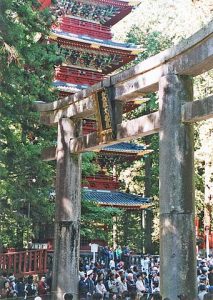Japan is a nation of 8 millions deities (3) 2017/08/31
It is commonly said that Japanese theory is composed of three elements, namely Shinto, Buddhism and Confucianism.
Buddhism which was born in India in B.C.6th century reached to Japan in around 5-6th century through China and Korea.
It came together with modern buildings and dazzling religious instruments including statues of Buddha. It must have been great shock and surprise for Japanese at hat time. There happened a battle and dispute among leaders and dominant figures whether they should accept Buddhism which could collide with traditional Shinto.
Finally Shinto did not reject Buddhism but contained Buddhism under it’s wide and generous mind.
Since then, Shinto and Buddhism together with Confucianism have influenced each other and have enhanced their own theories. Buddhism have changed dramatically after reaching to Japan. It was deeply influenced by the theory of Shinto and became completely different religion from the original Indian Buddhism.
For example, many students of Buddhism went and stayed in a deep forest for years which was common way for students of Shinto.
Usually monotheism won a battle against primitive animism and expelled it as premature theory. However in Japan Shinto did not lose the battle but have survived until today as the most fundamental theory or view of life among Japanese.
One of the important features of Japanese culture is not to expel or destroy rivals or enemies but to contain or pile up newly coming parts on top of traditional parts. The relation between Shinto and Buddhism is a good example of this Japanese particular feature.
 a tower of temple and a gate for shrine
a tower of temple and a gate for shrine







